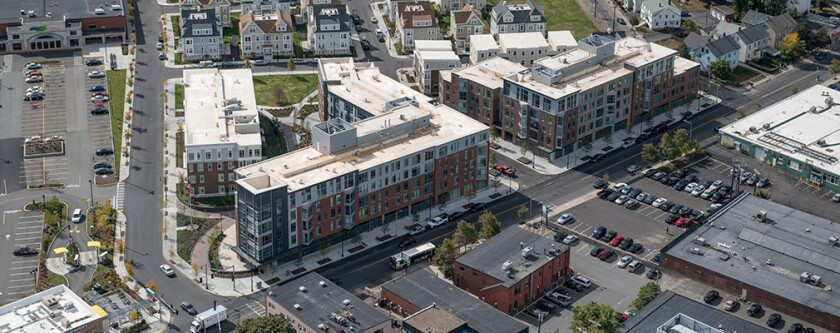Let’s start with offices. Even as vaccination takes hold and other aspects of urban life return to normal, the office market’s recovery has slowed. Nationwide, office vacancy rates were a whopping 16.4 percent for the first quarter of this year. Downtown Orlando, long considered a robust Sun Belt market, now has a 16.2 percent officevacancy rate, while Bloomberg CityLab finds that Manhattan office vacancies are at historic highs, even compared to after 9/11.
The Wall Street Journal reports that lending for offices has plummeted to 35 percent of 2019 figures. This is due both to low demand and uncertainty about the future of the market; the fear is that corporate commitments could dwindle “once existing contracts roll off and white-collar employees spend more time at home.”
Conventional retail faces similar trends. Moody’s predicted that retail vacancy nationwide could be as high as 12 percent in 2021 (it was already 10.6 percent for the first quarter) while online shopping would grow 5 percent over the next four years. The Moody’s data found a 1.5 percent decrease in rent after concessions. In New York in January, rent for retail space cratered 25 percent from the same period in 2019. Vornado Realty Trust, which has a large office and retail portfolio in major U.S. cities, lost $24 million early on in the pandemic, and its stock value is well under half its 2016 value.
All of this suggests a new approach to central city zoning. But many city zoning codes haven’t caught up: They still require that prime ground-level building space be reserved for increasingly obsolescent office and retail uses.
Meanwhile, there is a boom in demand for warehouse space. U.S. e-commerce sales grew to $800 billion last year, and it’s been estimated that digital commerce needs as much as three times as much warehouse space as store-based retail.
That seems to mean we need lots of new facilities. In 2019, the commercial real estate firm CBRE reportedthat warehouse vacancy rates were 4.4 percent despite rapid new construction, and rents were up 19 percent. Demand has surged even more since, due to stay-at-home orders and global supply chain disruptions, which have caused U.S. companies to store their products domestically rather than importing them. As James Breeze of CBRE notes, “At the end of the third quarter of 2020, more than 312 million square feet was under construction and 37 percent of this was already preleased.”
But warehouses have been stymied by zoning codes that force strict use separation and foster NIMBYism. Last year in upstate New York, Amazon tried building a distribution center, but a lawsuit claimed that because the parcel was zoned as an “interchange business district,” a warehouse was not allowed — despite being located near a major road. Other examples of hostility to Amazon’s last-mile fulfillment warehouse centers have occurred in Denver, Boston and Seattle, while in central California, opponents of a Walmart distribution center called the project a threat to public health due to truck emissions.
But pushing these warehouses far from population centers will worsen the environment by increasing vehicle miles traveled. It also undermines the core commitment of e-commerce brands — fast delivery of goods — by distancing them from major metros where customers are based.
Which gets to perhaps the biggest zoning-caused distortion in modern real estate: housing. Everything about this sector speaks to scarcity. Home sale prices have surged in the decade since the Great Recession, and particularly during the pandemic, increasing 26 percent year over year in 2021. Median rent in the U.S. is now $1,097, a modest but steady increase since 2005.
Housing starts are about half of what they were before the Great Recession, despite national population growth, helping to explain why prices rise. Housing rental vacancy rates have plummeted over this same period to 6.8 percent, and are generally much lower in tight markets such as San Francisco. This, too, results in large part from restrictive zoning laws that stifles new housing projects. The demand is there, most dramatically in central cities, and new construction brings down prices; zoning gets in the way.
Cities are always changing, and this is particularly true as technology erases distances. But cities aren’t helpless in dealing with the issue — especially since some of the problems are caused by their own land-use laws. A good first response to changing real estate trends is to allow empty office and retail spaces to be converted into housing — a process that requires zoning amendments in most places. But it might make more sense to question the idea that land needs to be zoned for usage in the first place. The uses themselves constantly evolve, and regulations should reflect that.
This article featured additional reporting from Market Urbanism Report content staffer Ethan Finlan.
Governing's opinion columns reflect the views of their authors and not necessarily those of Governing's editors or management.












